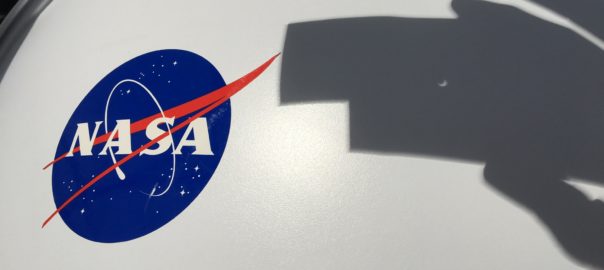NASA Nebraska Total Solar Eclipse
We prepared for the eclipse for years, and it did not disappoint. It was an incredible and spectacular experience! We were able to witness totality at the Stuhr Museum in Grand Island with about six thousand people in attendance. We had a team of 25 members of the NASA Launch Crew and everyone played an important part in the success of the launch of three high altitude balloons during the total solar eclipse and the recovery of all of the equipment.
The NASA Nebraska Space Grant team engaged with the public about the ballooning project, the eclipse, and NASA Space Grant. Michael and Kendra Sibbernsen led the team to launch the NASA common payload to video stream images from the balloon while in flight and a second balloon carrying experiments from Metropolitan Community College students. Chris Schaben led the team from Omaha Public Schools to launch a third balloon with experiments from some of their students.
The Preparation
We arrived at the Stuhr Museum on Sunday, the day before the eclipse, to start preparations and make sure the helium was delivered and that the internet connection was sufficient for our streaming video.
Ten cylinders of helium were delivered – enough for our three balloons and extra for emergency purposes if one popped.

Viaero was the company that donated their services for the internet connection. After having some initial issues, they decided to string an optical fiber from their mobile cell tower that was parked nearby for the occasion and brought in a large generator as well.

It took a while, but by the time we left, everything was working well and we had a very fast dedicated internet connection. (Photo Credit: Michaela Lucas)
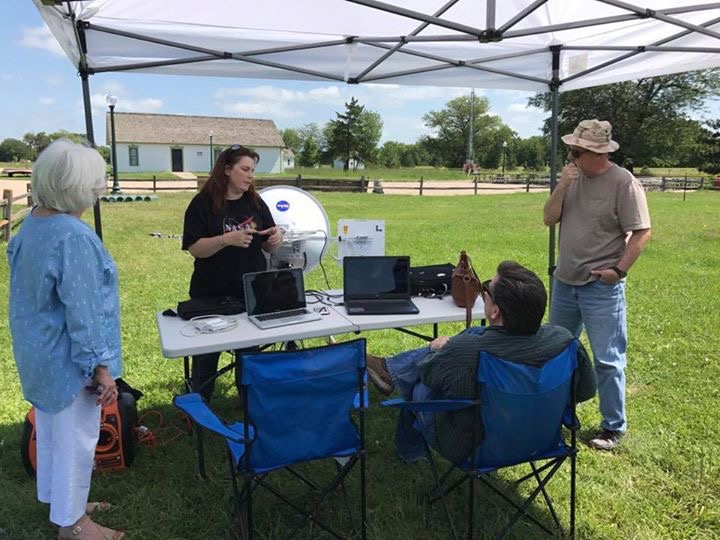

We prepared tables and signs and set up a canopy to keep the sun off the computers and talked to the University of Minnesota team who dropped by to assess the conditions. Although they were planning on launching their three balloons from a small town southwest of Grand Island, they were going to have two students monitor a base station at the Stuhr Museum to stream video from one of the balloons.
We had a pre-flight briefing at the hotel that evening and tried to get some sleep, although some of us were too excited about the next day.

(Photo credit: Michaela Lucas)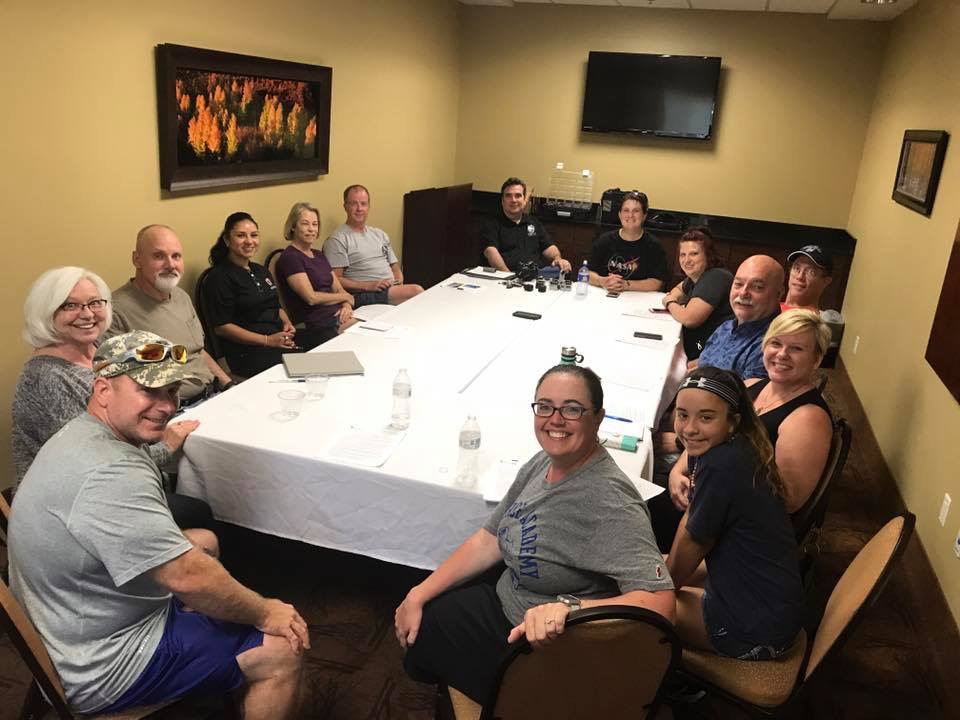
The Morning of the Eclipse
We arrived at 7 am through a secret entrance because the museum was opening their gates at 8 am and there was already a line of cars waiting.


Several team members had media interviews and prepared the payloads for their flights.
Fay Cardona participated in an Astrobiology experiment from NASA Ames. Because the conditions in near space are similar to those on the surface on Mars, hearty bacterial sample was placed on the uppermost pod on the MCC balloon. An identical second sample was kept on the ground as a control. She will submit her observations and return the samples to the NASA center for testing.
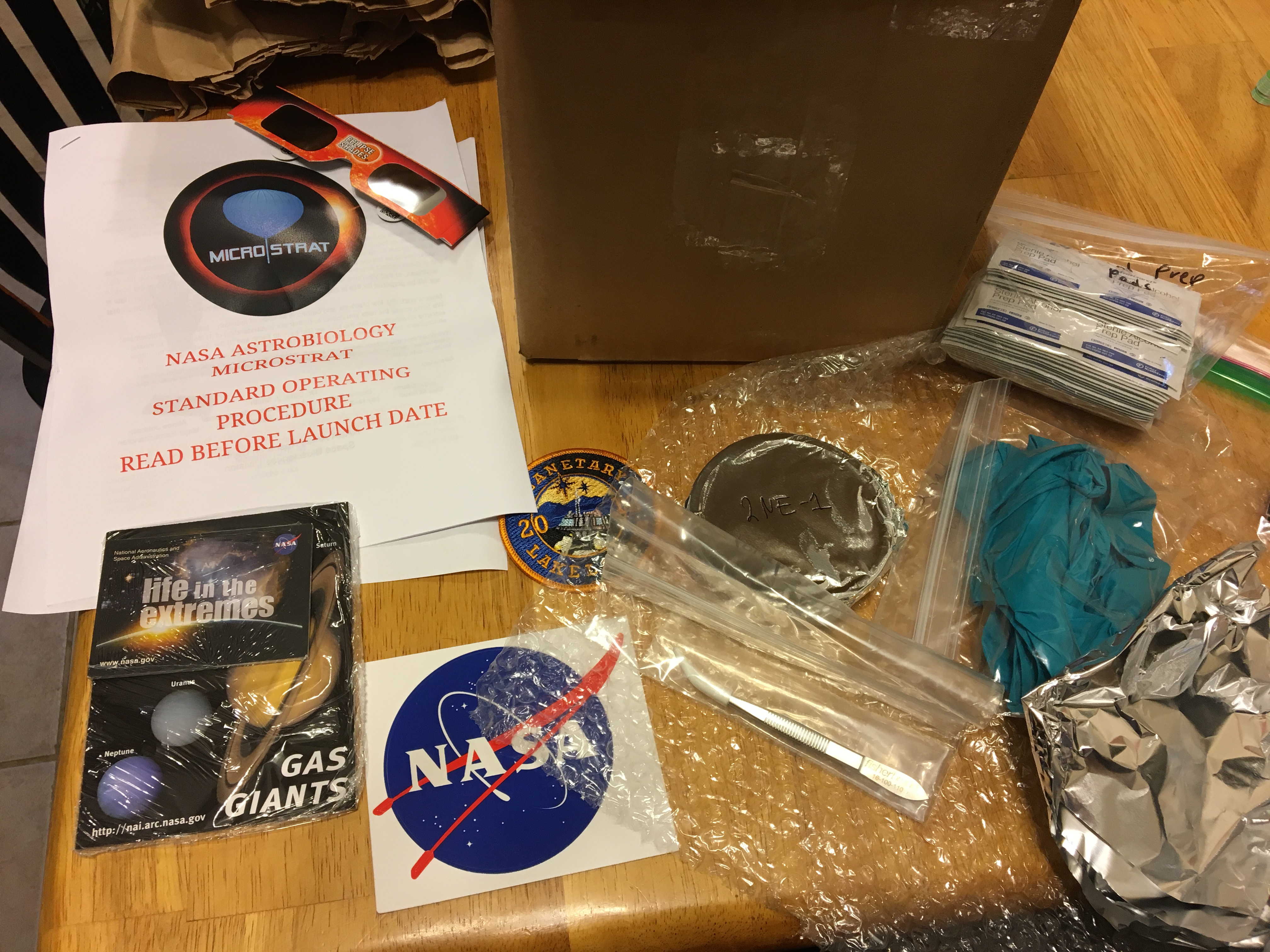
Former MCC student Josh Gebbie tried a new sensor from Vernier. This was to measure light intensity, red, green, and blue light, as well as ultraviolet. He will use this information to continue his studies of light in near space for his senior project at UNO.
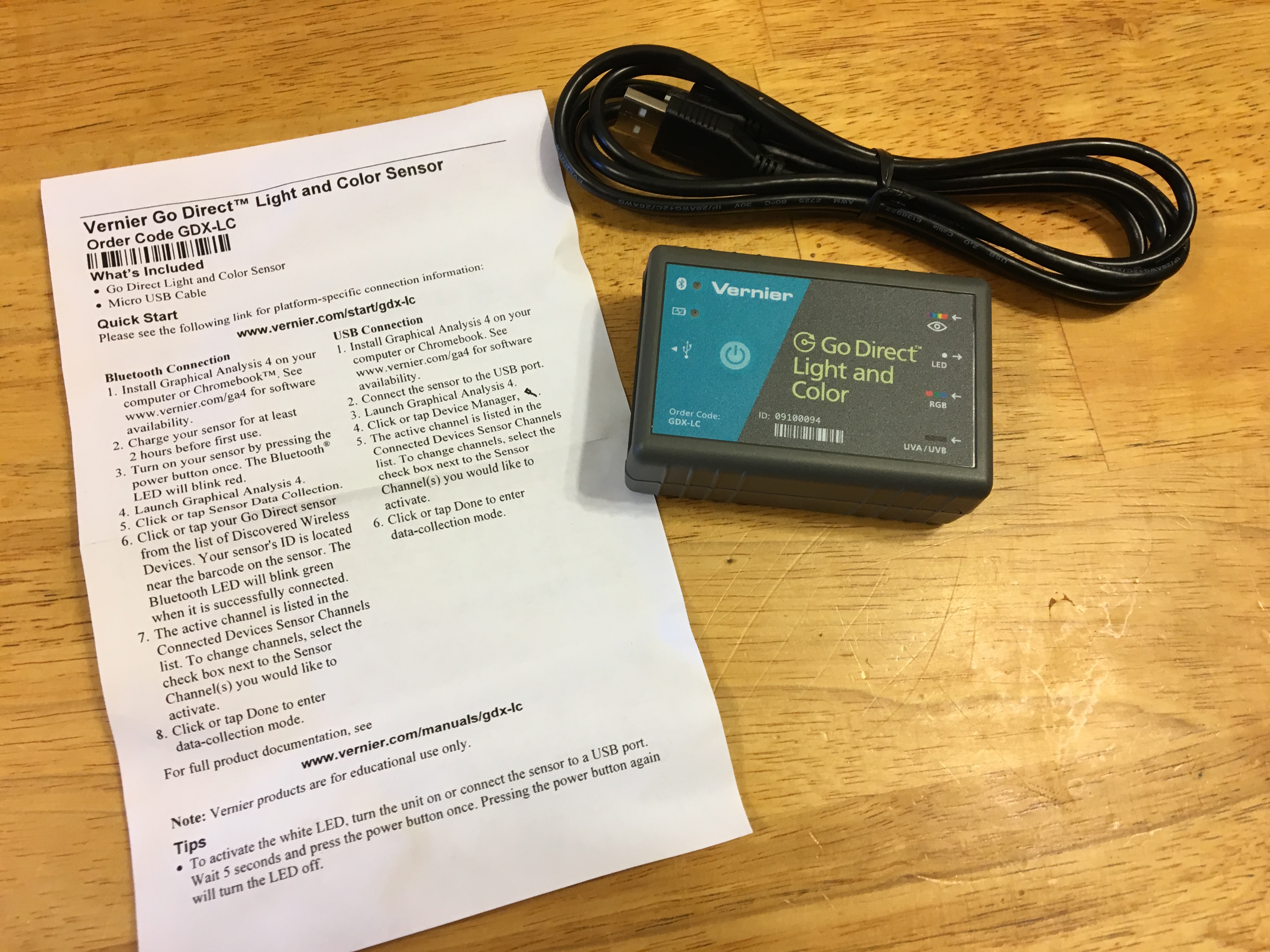
This was the third iteration of Mike Leidy’s Control Heading Automation Device (CHAD). It has a stepper motor and is programmed to use the magnetic field sensor to orient itself using an Arduino program. He attached a plastic dome to prevent losing the camera.

The Launches
At 11:40 am, Scott Tarry, director of NASA Nebraska Space Grant, called the FAA in Minneapolis to let them know that we were “GO” for the launch of three balloons. These were launched at 12:00 pm, 12:10 pm, and 12:20 pm so that they would all be in the air for the eclipse.

The wind picked up and made the launch of the second balloon particularly difficult. The winner for the best tuck-and-roll to avoid the balloon goes to Melissa Wragge of NASA Nebraska Space Grant.


Our NASA balloon was one of the red balloons over Nebraska in the following screenshot.
![]()
We were streaming video while on the ground and once the balloon was in the air. However, a short time into the flight, my automatic tracking system using a Python program froze because it was unable to get the coordinates from the Iridium website. Our internet connection remained very fast and very stable, so that was not the problem. I was able to reconnect a couple times to continue the stream, but found it was more efficient to pull the power to our servos and point the dish manually. We could see the signal strength on the modem on the back of our dish and maintained that connection as long as was possible.

We were able to view the streams from all the teams and watched the moon’s shadow from above the clouds. The rest of our imagery would have to be recovered from the balloons and shared later.
Totality!
The weather forecasts were expecting clouds for a large portion of Nebraska, but there was a hole in the clouds around the time of totality and were able to experience this once-in-a-lifetime event.
It was breathtaking, emotional, and absolutely amazing! The temperature dropped, it got dark and the sun disappeared and looked like there was a big black hole in the sky. People were cheering when darkness fell and Venus was easily seen. Everyone had an experience they will never forget.

North Omaha high school students watch the eclipse. (Photo credit: Daniel Sitzman)
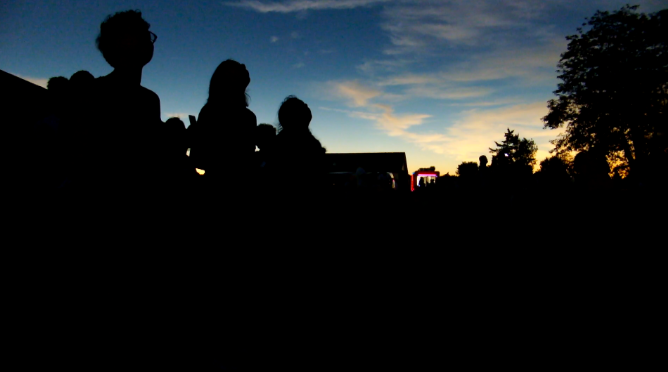
Click to see time lapse video of the crowd during totality
Michael had a camera set up with a solar filter and was able to take some wonderful images of the eclipse. You can see the reddish chromosphere around the entire sun and some solar prominences projecting slightly into the corona.
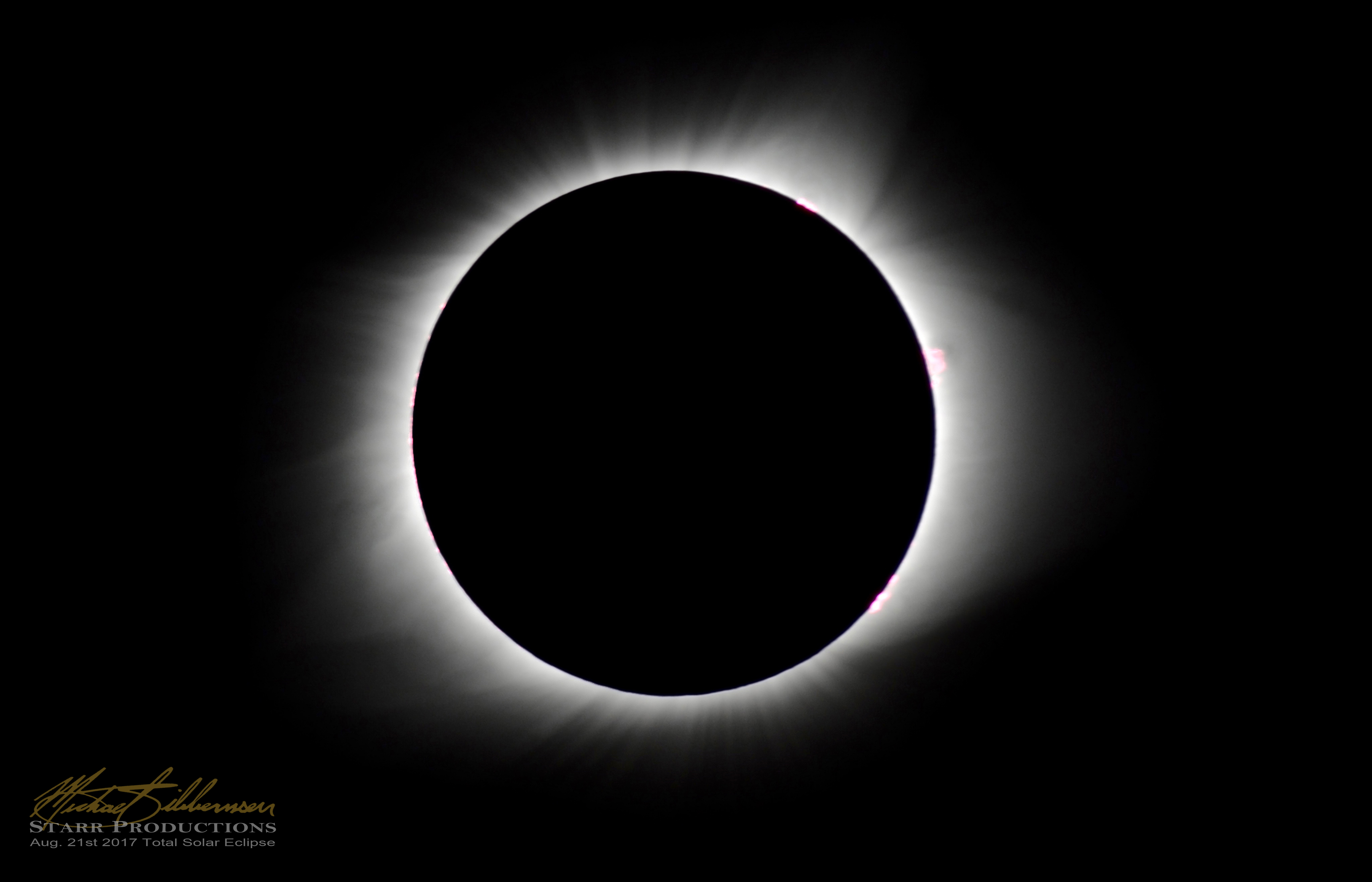
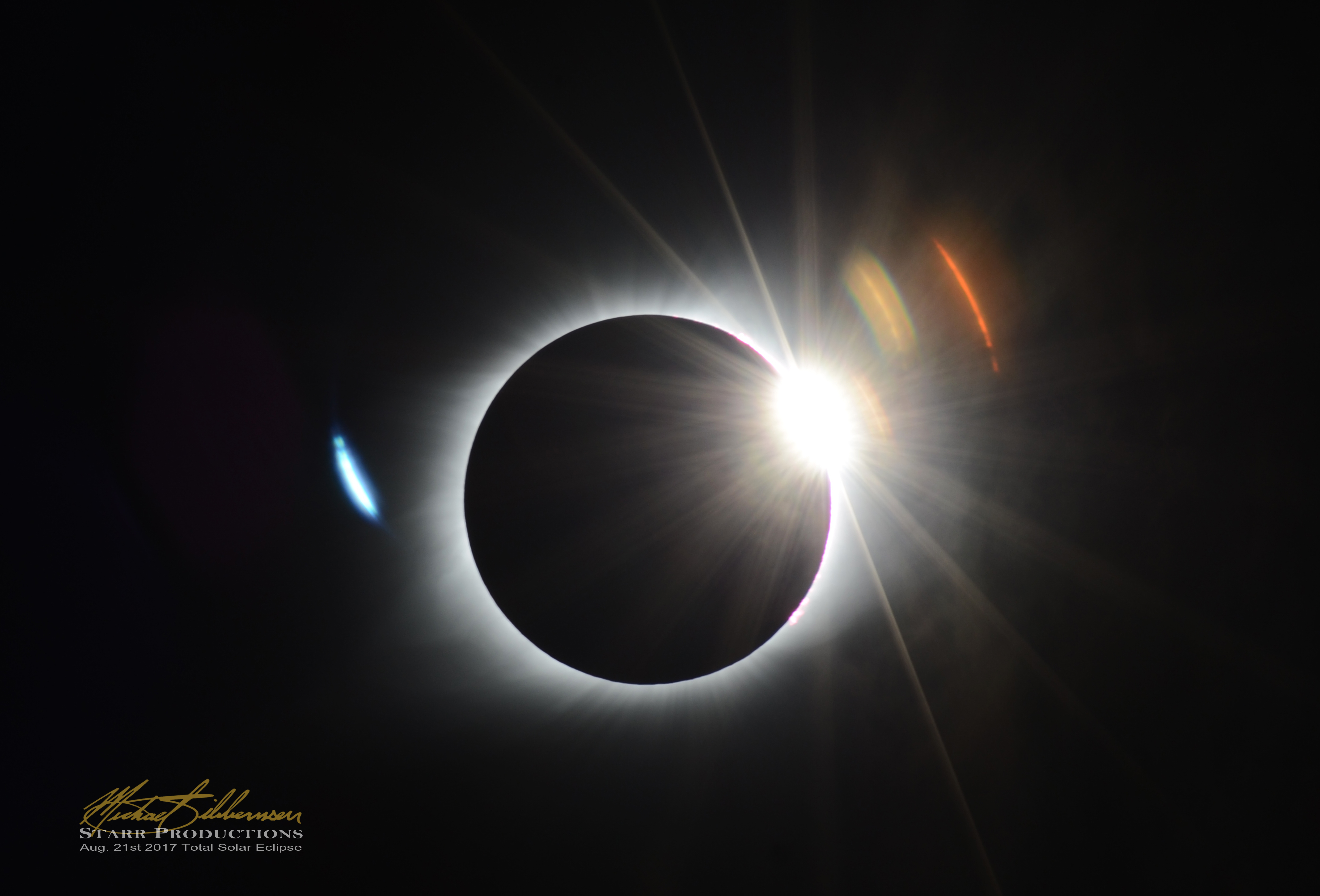
For Michael’s diamond ring effect photo, he had a couple of reflections within the lens which gave it a unique look. In those reflections you can see one Baily’s bead, caused by light passing through the varied topology on the moon.
Below is a composite image of the progression of the eclipse.

We had many cameras on the ground and in the air and we are slowly processing all of that footage. I will write a separate blog post on the recovery of all three sets of payloads and the results of the experiments as well as video and photos from the air soon.
